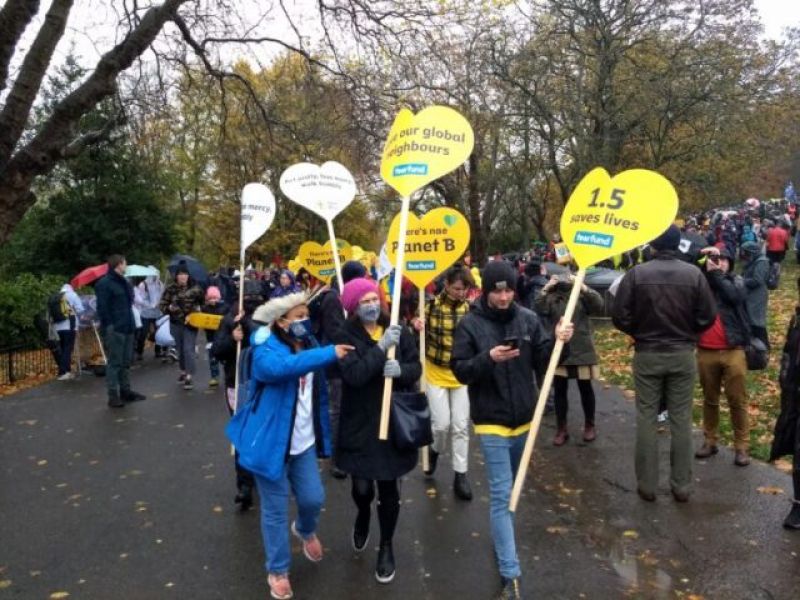- Concerted global push for Sudan ceasefire needed: Guterres |
- Light showers bring little relief to Dhaka dwellers |
- Lightning, rain kill 50 in Pakistan |
- Heavy storms soak Gulf as Oman toll rises to 18 |
- Chuadanga records season’s highest temperature 40.6 degrees |
Glasgow to Kunming: Climate, biodiversity together at last?

Cop26 - Demonstrations demanding ambitious, substantive and equitable measures to address the climate crisis - IPS
The Convention on Biological Diversity (CBD) and United Nations Framework Convention on Climate Change (UNFCCC) processes have carried on in parallel during the past two years. A diverse set of actors, with varying intentions, have sought to link the processes including through the incorporation of the concept of “nature-based solutions” (NbS). Coupled with this is the focus on the mitigation potential of “nature” (measured in Gt CO2e per year) and, implicitly, the value that this amount, once commoditized and monetized, could leverage from carbon markets.
The most recent draft of the post-2020 Global Biodiversity Framework (post-2020 GBF) of the CBD links climate change and biodiversity most explicitly in its Target 8, which includes a climate mitigation target: “contributing at least 10 GtCO2e per year to global mitigation efforts.” It can be argued that such a numerical target, focused on mitigation, belongs under the UNFCCC, not the CBD.
We are pleased to share with you a new TWN Briefing Paper, “From Glasgow to Kunming: Climate and biodiversity together at last?” that considers several outcomes of the recent UNFCCC COP26 that might have a bearing on the negotiations on the post-2020 GBF and that might provide insight into why some Parties to the CBD are eager to include a climate mitigation target in the post-2020 GBF. It explores connections between the outcomes on carbon markets (Article 6 of the Paris Agreement), biodiversity, and nature-based removals. This leads clearly to considerations of finance and resource mobilization: the quantity “10 Gt CO2e” signifies not merely the amount of carbon dioxide emissions that might be avoided or carbon that might be removed from the atmosphere, but implicitly hints at the value of that 10 Gt in a global carbon market and in non-market resource-mobilization strategies. Finally, contentions around use of the term “nature-based solutions” at the UNFCCC are briefly summarized.
The paper concludes that, rather than including NbS and a climate mitigation target, Target 8 of the GBF should rather focus on what action is needed to protect biodiversity. This would require three elements: 1) a reduction of the threats to biodiversity from climate change; 2) a reduction of the threats from actions that may be taken to address climate change; and 3) prioritization of actions that might be taken to mitigate and adapt to climate change that would enhance biodiversity at the same time.
- Third World Network
- https://twn.my/title2/briefing_papers/twn/Glasgow%20Kunming%20TWNBP%20Mar%202022%20Stabinsky.pdf

